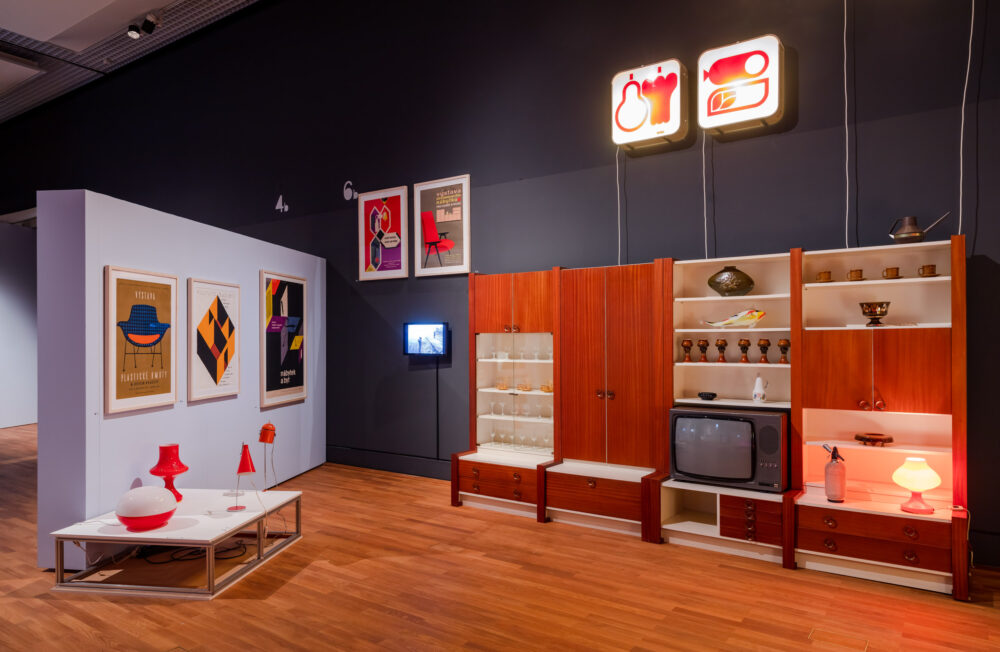Aesthetics of the wall unit. The birth of prefab block culture
The ‘normalization’ period in Czechoslovakia—when the non-reformist wing of the Communist Party worked to consolidate power and ‘normalize the situation’ after the Warsaw Pact invasion by purging reformists, restoring censorship, and abolishing numerous interest groups and political organizations—can be characterized as a time of resignation in society, further deepened by a large wave of emigration. Part of the communist regime’s strategy to calm the escalated political situation and distract the public from political events was to promote consumerism, also in terms of better housing availability. The acquisition of one’s own flat came with the unspoken assumption that the new occupant would remain loyal to the Communist Party and refrain from any criticism.
Housing construction underwent exponential growth, also enabled by technological advances in the production of prefabricated components. In a very short period of time, new residential buildings were constructed for about one third of Czechoslovakia’s population. Prefab housing estates were so different from anything seen before that specialists, architects, urban planners, manufacturers, sociologists, psychologists, and—above all—the estate inhabitants themselves all began searching for ways to make these new housing blocks into pleasant places to live.
The huge number of new flats also required the cooperation of other industries in order to equip these homes with furniture, textiles, and kitchen utensils. The combination of the new architecture and the mass occupation of new flats gave rise to a specific phenomenon known as ‘prefab block culture’, a lifestyle resulting from all the positive and negative aspects associated with living in a prefab housing block. The living room became the space receiving the most aesthetic care in the prefab home, not least because of its social function and its representing of the proud owners. At its heart was the TV set, an item owned by 98 % of Czechoslovak households in 1976. Apart from the television and the car, the wall unit—which dominated the living room—was an equally important status symbol and proof of social respectability.
In the product catalogue that accompanied the launch of his Radikál wall unit, the architect and furniture designer Gerald Neusser wrote 1971: ‘The solution of universal living spaces and their necessary equipment is emerging in the light of social and cultural needs. All the more so when living takes place among powerful conventions that lead us to traditional patterns of style, representation and hygiene, between the time economy of those employment and those going to school and the necessary work to maintain the personal and the household. If the apartment is to be our workplace, workshop and a social space, a cinema, an ironing room, a discussion club and yet still a cell attached to the heart, then all of us who influence its spatial layout, furnishing and all that we need to store in it must be instrumental.’
Countries: Czech Republic
Tags: Housing and living, Product design, System design, Urban design
